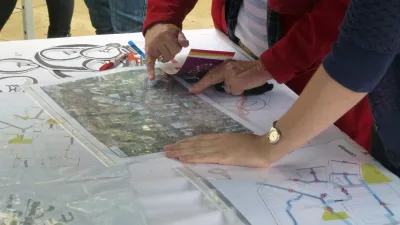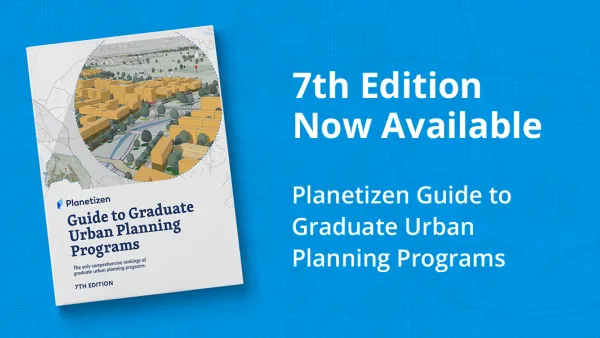Planning can be a great career for socially conscious individuals, but university programs are struggling to attract new students to the field. A trio of academics are raising awareness about the field through community activation.

Planning is a growing field with relatively highly levels of pay—so why don’t more people know about it as a viable option for a prosperous and fulfilling career?
“The median income for urban planners in the U.S. is US$78,500. Employment in the field is projected to grow by 4% between 2021 and 2031 from 41,900 jobs in 2021,” according to an article by Stephen Kofi Diko, Danilo Palazzo, and Leah Hollstein for the Conversation.
Moreover, the field also suffers from a lack of diversity in its ranks. According to the article, “in the U.S., of the 40,000 or so members of the American Planning Association, only 13% are nonwhite, compared with 24.5% of the U.S. population. There are also about twice as many male urban planners as there are females in the profession,” according to the article. (The article also notes that similar trends hold true in the profession around the world.)
The lack of attention to the profession is noticeable in declining enrollments at planning programs around the country as well. So why don’t more people know about planning as a prosperous and fulfilling career?
The authors report that planning faculty at the University of Cincinnati in 2016 launched the Activate Community Empowerment (ACE) initiative in an effort to raise awareness of the field with a three-week outreach program conducted with high school students at Hughes STEM High School in Cincinnati. The source article, linked below, reports on more of the results of the experiment, which produced results in the community while introducing the high schoolers to the field.
The authors of the article suggest three steps for educators to take to raise awareness about planning: 1) Partner with schools to provide real-world experiences, 2) Make urban planning part of the high school curriculum, and 3) Support prospective and existing urban planning students.
The article is informed by the authors’ book, Routledge Companion to Professional Awareness and Diversity in Planning Education, which was published in April 2023, and research published by the Planning Practice & Research Journal in June 2020. More steps for raising awareness about the field are included in the book.
FULL STORY: Urban planning is often overlooked as a career – here are some ways to change that

National Parks Layoffs Will Cause Communities to Lose Billions
Thousands of essential park workers were laid off this week, just before the busy spring break season.

Retro-silient?: America’s First “Eco-burb,” The Woodlands Turns 50
A master-planned community north of Houston offers lessons on green infrastructure and resilient design, but falls short of its founder’s lofty affordability and walkability goals.

Delivering for America Plan Will Downgrade Mail Service in at Least 49.5 Percent of Zip Codes
Republican and Democrat lawmakers criticize the plan for its disproportionate negative impact on rural communities.

Test News Post 1
This is a summary

Test News Headline 46
Test for the image on the front page.

Balancing Bombs and Butterflies: How the National Guard Protects a Rare Species
The National Guard at Fort Indiantown Gap uses GIS technology and land management strategies to balance military training with conservation efforts, ensuring the survival of the rare eastern regal fritillary butterfly.
Urban Design for Planners 1: Software Tools
This six-course series explores essential urban design concepts using open source software and equips planners with the tools they need to participate fully in the urban design process.
Planning for Universal Design
Learn the tools for implementing Universal Design in planning regulations.
EMC Planning Group, Inc.
Planetizen
Planetizen
Mpact (formerly Rail~Volution)
Great Falls Development Authority, Inc.
HUDs Office of Policy Development and Research
NYU Wagner Graduate School of Public Service





























